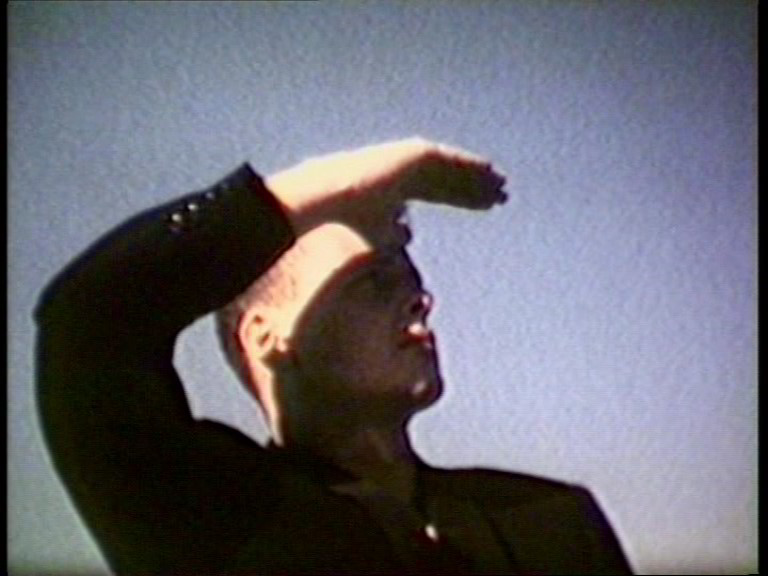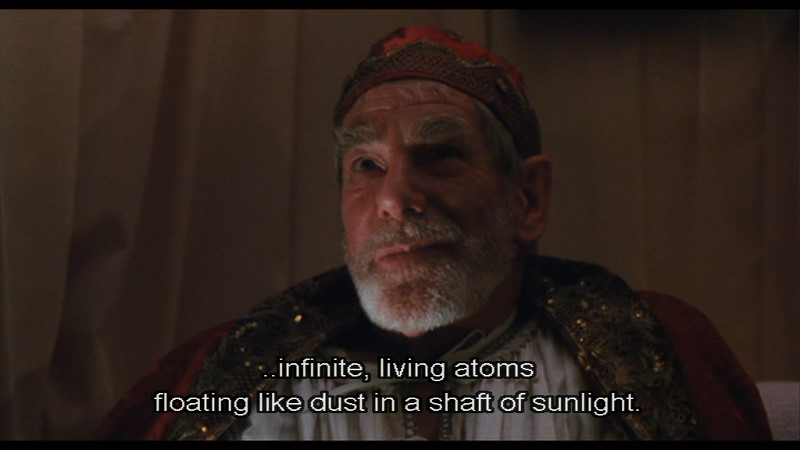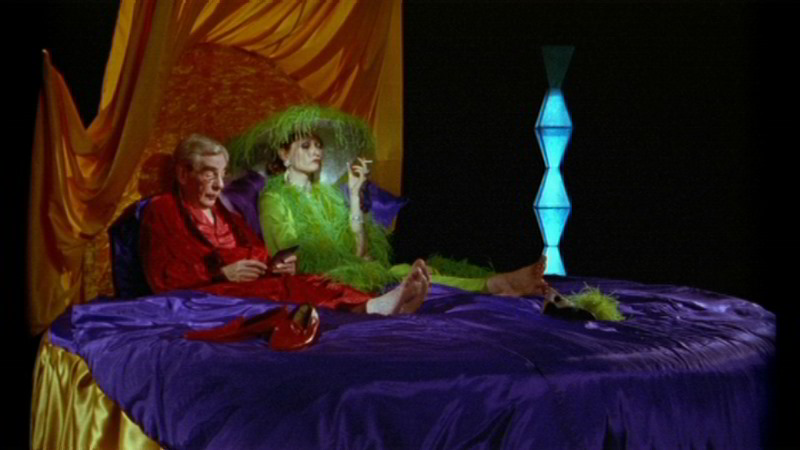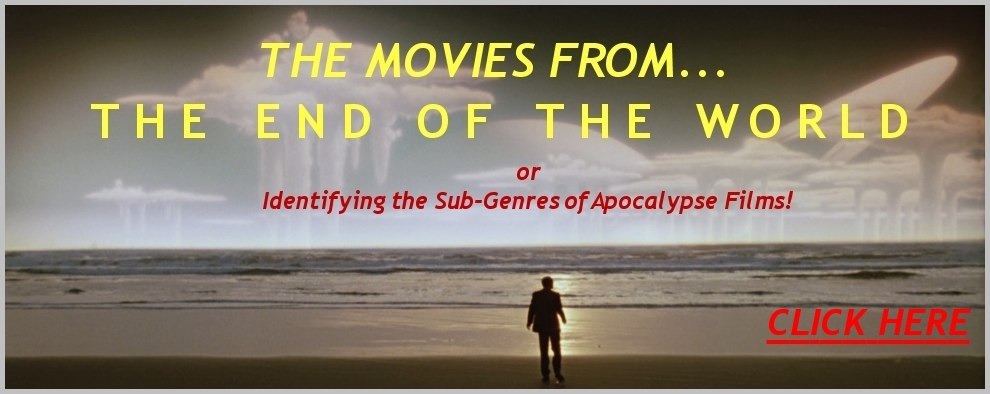![]()
![]()

![]()
![]()
 |
Glitterbox: Derek Jarman x 4
The Angelic Conversation (1985)
Caravaggio (1986)
Wittgenstein (1993)
Blue (1993)
Titles
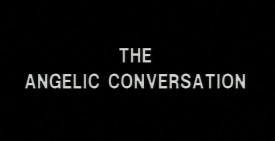 |
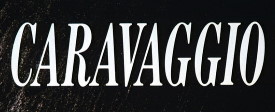 |
|
|
|
|
The Angelic Conversation (1985): Jarman's painterly eye and technical ingenuity are utilized to good effect here in this characteristically elliptical film that uses 12 Shakespeare sonnets (narrated by Judi Dench) as its starting point. With stop-motion effects, strange tableaux of eerie landscapes and a similar slew of Jarmanesque imagery, the black-and-white pictures processed on video lend the film a translucent and romantic air that is perfectly complemented by Dench's rich velvety intonations.
Caravaggio (1986):
Derek Jarman struggled for seven
years to bring his portrait of the seventeenth-century Italian artist
Michelangelo da Caravaggio to the screen. The result was well worth the wait,
and was greeted with critical acclaim: a freely dramatised portrait of the
controversial artist and a powerful meditation on sexuality, criminality and art
- a new and refreshing take on the usual biopic.
Wittgenstein (1993): Jarman's biopic brings to life the seriously eccentric philosopher Ludwig Wittgenstein: Viennese millionaire's son, schoolteacher, WWI infantry officer, hospital porter, gardener, naturalised Briton and homosexual. Initiated as a small-budget educational TV programme, then produced for the BFI by one-time Trot Tariq Ali from a script by Marxist professor Terry Eagleton, it hardly sounds enticing. But thanks to genuinely engaging performances by Johnson and Chassay (as Ludwig, man and boy), as well as a witty script and economical direction, this turns treatise into treat. It's shot on the simplest of sets against black backgrounds, with all the money spent on costumes, actors and lights, and framed like dark Enlightenment paintings. If it ranges wide rather than deep - the philosophy is either dropped into conversation or presented like a blackboard primer - Jarman still manages to capture the spirit and complexity of his fascinating subject. Of the entertaining cameos, Quentin's epicene John Maynard Keynes (in a delightful series of pastel shirts) and Gough's miffed Bertrand Russell are the most telling. Excerpt from TimeOut Film Guide located HERE
Blue (1993):
Blue,
Derek Jarman's final film, was made as
he was dying of AIDS and blind, his
vision hijacked by constant blue light.
For its entire duration, the screen is
filled with the color blue and nothing
more, while Jarman, with voice
contributions from frequent
collaborators Tilda Swinton, John
Quentin, and Nigel Terry, weaves a
poetic, angry, wistful, and sometimes
humorous account of his illness and
impending mortality. He speaks of having
become a "walking laboratory," taking up
to thirty pills a day, of the chore of
hospital waiting rooms, of the brusque
indifference of medical personnel, of
the hypocrisy of charity, and of the
color blue. Jarman's voice is
commanding. This is not an informal
affair. He often speaks in verse,
augmented with music and sound by
Jarman's regular composer Simon
Fisher-Turner, as well as Brian Eno,
Coil, Momus, The King of Luxembourg, and
others, forming an atmospheric wall of
sound that is the film's imagery
and is constructed in a highly cinematic
way, with abrupt shifts in texture and
tone. (The short-lived ambient
sketch-comedy radio program Blue Jam
created a similar mood.) Jarman invokes
a sense of journey within the viewer,
and the effect is hypnotic and moving.
You walk away from it with total
identification with Jarman, and once
your eyes return to the corporeal world,
it's as though sight has been restored.
In terms of form, this movie is as bold
as anything Jarman has done. |
Posters
 |
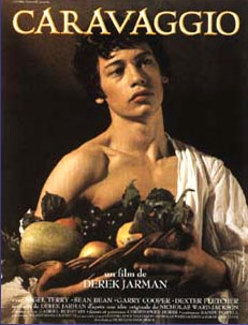 |
Theatrical Releases: Various from 1985 - 1993
DVD Review: Zeitgeist Films (4-disc) - Region 1 - NTSC
| DVD Box Cover |
|
CLICK to order from: |
| Distribution | Zeitgeist Films - Region 1 - NTSC | |
| Time: | over 4.5+ hrs. total on 4 discs | |
| Bitrate: The Angelic Conversation |
 |
|
| Bitrate: Caravaggio |
 |
|
| Bitrate: Wittgenstein |
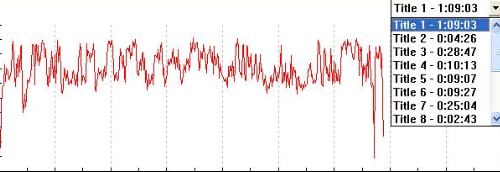 |
|
| Bitrate: Blue |
 |
|
| Audio | English (original) | |
| Subtitles | English, None | |
| Features |
Release Information:
Edition Details: The Angelic Conversation:
• Interviews with
producer James Mackay and production designer Christopher Hobbs Caravaggio:
• Interviews with Tilda Swinton, Nigel Terry
and production designer Christopher Hobbs Wittgenstein:
• Introduction by film
historian Ian Christie (4:24) Blue • Glitterbug (53:13 / 4:3)
18-page liner notes booklet
|
|
| Comments: |
These are all single-sided, dual-layered DVDs but each of the four transfers are from unconverted PAL sources. I can confirm this as we have reviewed 3 of the four from PAL standards and I own the fourth. See the BFI edition of The Angelic Conversation covered HERE, Caravaggio, also by BFI, HERE and a comparison with two UK editions of Blue HERE. The running times in our reviews will bear this conclusion out. Now whether the system you are viewing displays the inherent ghosting/combing and related incorrect standard artifacts, basically the image quality is highly inferior to transfers from the correct standard. This might be especially infuriating for those sensitive to 4% PAL speedup as it will still exist in these editions (I don't believe anything has been done to rectify pitch). This is unusual for Zeitgeist as I have found them to be aware of this inferior digital production practice but I'll guess it is a result of the source material they were given and/or they didn't find it cost-effective to properly upgrade the transfers. The 4 main features of this boxset are housed in a custom case (see above image) which looks quite nice and it appears as though only Caravaggio and Wittgenstein are being sold separately by Zeitgeist at this time (as Special Editions). All four features are coded for region 1 in the NTSC standard and all features are anamorphic (where widescreen) in their original aspect ratios. I believe that Zeitgeist have some sort of agreement with BFI in place with other duplicate film examples in their past. Each have original English audio and options for English subtitles in a clear and clean white font with black border (see samples below).
Image: Visually none of these four films stack up to
their UK DVD counterparts for the main reason mentioned in the first
paragraph. They are softer although colors appear equally strong. It
seems such a shame to have them dual-layered and 16X9 enhanced (where
widescreen) only to have this fatal flaw of an incorrect standard
marring their NTSC 'SE' debut. The Angelic Conversation still
looks rough and I now think I see chroma along with its 16mm pragmatic
roots. Bottom line is that there are superior transfers existing for all
4 films, but the reasonableness of the price of this set should be a
consideration.
Without going into extensive detail - supplements are
fabulous, but all (or almost all) are already on the 3 BFI editions (
interviews, Swinton etc. on
The Angelic Conversation, Caravaggio and Wittgenstein)
and the Artificial Eye of Blue (also has the,
almost hour long, Glitterbug). I don't see anything significant
that is new aside from the 18-page liner notes booklet.
Overall impression:
Well obviously we don't fully endorse with weak image transfers and no spanking
new supplements from existing editions. Jarman's works can be difficult for
mainstream viewers to embrace but I definitely encourage those with an open mind
to see these films if you can. If you are region 1-locked (why are you?) it
would be one group to suggest purchasing as the collection price is pretty sweet
considering all you are getting - 4 Jarman films and the extensive extra
features. It is our job to notify you that there are better, albeit highly
expensive, editions available at the present time. I am honestly disappointed
about the ghosting/combing.
|
DVD Menus
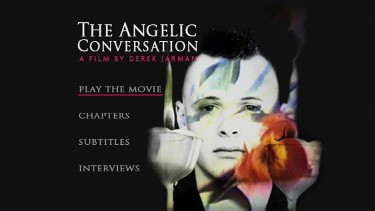 |
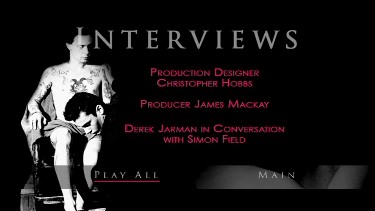 |
 |
 |
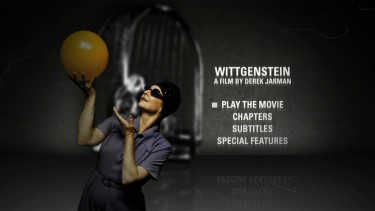 |
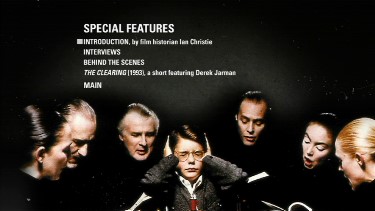 |
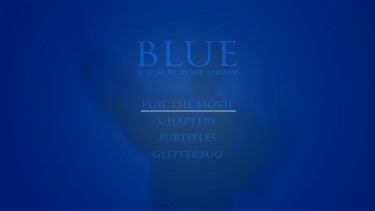 |
 |
The Angelic Conversation (1985)
Screen Captures
BFI Region 2- PAL (reviewed HERE) TOP vs. Zeitgeist - Region 1 - NTSC - BOTTOM
|
|
|
|
|
|
Caravaggio (1986
)
Screen Captures
BFI Region 2- PAL (reviewed HERE) TOP vs. Zeitgeist - Region 1 - NTSC - BOTTOM
|
|
|
|
Like all the releases in this boxset combing/ghosting is readily visible...
|
|
Wittgenstein (1993)
Screen Captures
BFI Region 2- PAL TOP vs. Zeitgeist - Region 1 - NTSC - BOTTOM
|
|
|
|
Like all the releases in this boxset combing/ghosting is readily visible...
|
|
Blue (1993
)Screen Captures
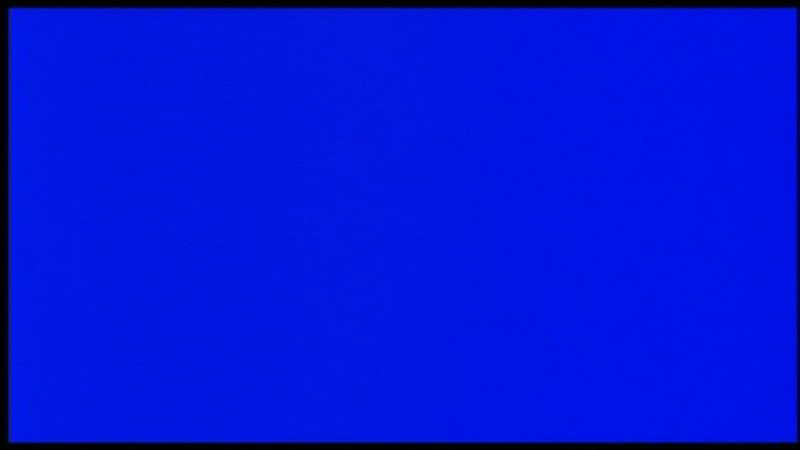 |



